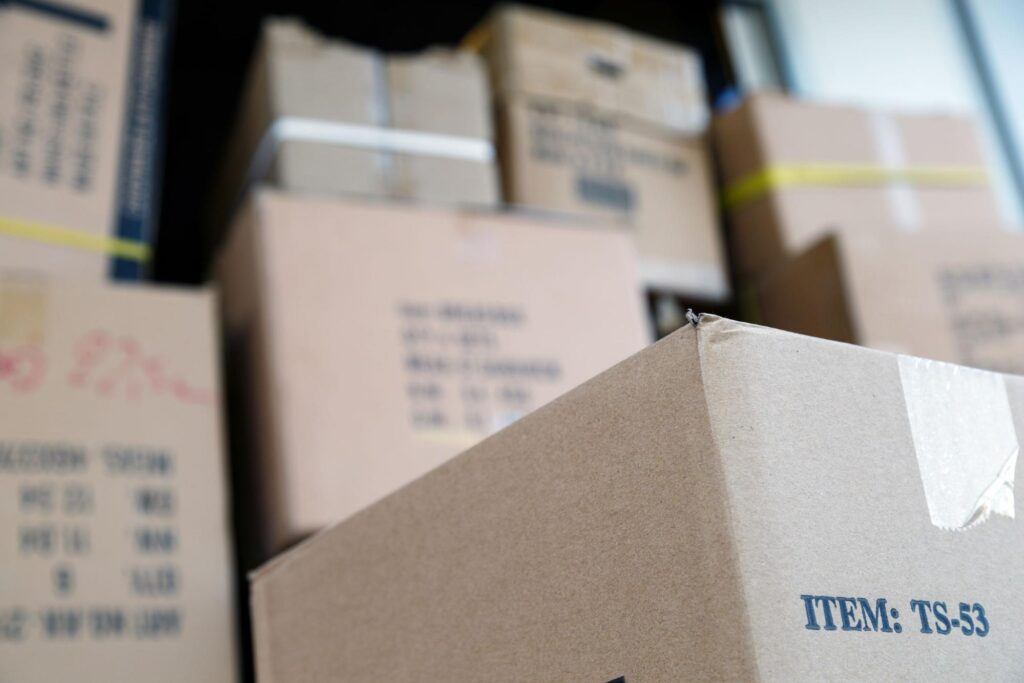How Do Insurers in the Digital Age Smoothly Transition to Digital Paper Records?

As insurance companies transition to digital platforms, they’re also embracing the ease of use offered by cloud-based digital documentation.
While some insurance departments or companies have gone paperless, they still must contend with records from earlier, paper-based eras. Many of these records contain sensitive customer information that must be protected while the records are stored, accessed or destroyed.
When older paper records are digitized, concerns about data protection still exist, whether the documents are archived or sent for destruction. Digital paper records can also pose problems with access and organization.
Insurance companies seeking to streamline workflows while also complying with privacy and security obligations benefit from a clear understanding of the issues surrounding paper documents.
The P&C Carrier’s Journey to Fully Digital
Most insurance companies have embraced the digital age, particularly when it comes to collecting customer information. Some companies even offer discounts to customers who agree to a paperless environment.
Insurance companies have been somewhat slower to transition to paperless platforms for their internal operations. However, the same benefits touted to customers who go paperless are often available to insurance company staff who also work in a paperless environment.
For one thing, paper is expensive at scale. The costs associated with managing it can top $8 billion annually in the US alone, says Matt Peterson, CEO of eFileCabinet. When labor and time are factored in, a company may spend $20 every time a paper document is filed, $120 every time it is misplaced and $220 every time it is lost and must be recreated, says Peterson.
Paperless documents may also discourage knowledge-hoarding among staff members by making it easier to share access to information, says Mike Kappel, CEO of Patriot Software, LLC. Sharing documents digitally makes them more accessible by multiple parties, which in turn enables staff to address customers’ needs more easily.
Digital paper records can pose certain legal challenges, however. For instance, in a 2014 case, the California Court of Appeals held that an employer could not prove that the electronic signature on an arbitration agreement belonged to its employee. Why? Because there was no way to authenticate the signature. In 2016, the same court clarified that authentication tools, like unique login credentials, could support verification of electronic signatures, say Ashley H. Verdon and and Neil Eddington at Chapman Glucksman.
The good news for insurance companies is that unique login credentials for customers and employees can also be used to meet other digital documentation requirements, such as those related to security and privacy.
Both paper and digital records are subject to certain requirements. For instance, both paper and digital records must be managed, made accessible to the proper parties, protected from security and privacy breaches, and disposed of when necessary, says Cassie Findlay, cofounder of the Recordkeeping Roundtable.
Phasing Out Paper-Based Workflows
Consider how the BOLT Platform empowers carriers to go fully digital. It creates a digital pipeline for handling quotes. It makes customer profile setup and admin simple and streamlined. It even creates a pipeline for handling necessary documents, whether they’re digital files or hard copies.
These kinds of platform-based approaches are necessary for any organizations working to bridge the digital divide.
Insurance companies aren’t alone in seeking paperless solutions, nor in finding the process complex. Although federal agencies were tasked with going paperless in the mid-2010s, many needed guidance on how to maintain, use, dispose of and transfer older paper records in a new digital environment, says Courtney Anderson, electronic records policy analyst at the National Archives and Records Administration (NARA).
To improve both digital and paper records management, it’s important to clarify why certain items need to be stored in certain formats, recommends Diane Batayeh, CEO of Village Green. When reasons are clearly articulated, determining which information must be stored in which format becomes easier.

Storing and Protecting Old Paper Records
Although data privacy and security are major concerns, properly managed digital paper records offer security protections that paper records do not. For instance, digital records with effective backup protocols help protect data from catastrophic events, while destroyed paper records may be impossible to reproduce, say David Rajczak and Angela Spinks at Oral Health Group.
The relative fragility of paper records, however, demands special consideration when an insurer seeks to store or archive these records in their paper formats rather than digitizing them and then disposing of the paper version.
For instance, older paper records may be printed on acid-treated paper, which can decay over time. Inks can also fade, rendering older documents unreadable. Exposure to humidity, dust, extreme temperatures and oils from human hands can also lead to paper document degradation, notes the Library of Congress.
To preserve these documents in their paper format, consider photocopying them onto acid-free paper. If for some reason the original itself must be retained, consider storing the item in an acid-free plastic sleeve, says Melissa Barker, archivist for Houston County, Tennessee.
Issues surrounding paper record archival and storage may be compounded when an insurer takes a do it yourself approach rather than working with a company or platform designed to facilitate digitization, says Chelsea Zabala at DocuFree. When departments are left to digitize on their own, privacy lapses and data fragmentation may result. Insurers may not realize how unworkable the system is until after a serious error has occurred. The right platform can also help insurance companies transition from paper to digital environments more easily, says Stephen Altrogge at HelloSign.
As with digital paper records, controlling access to old paper records is an essential step toward better security. Choosing a digital platform that allows the use of APIs can make it easier for staff to access both paper and digital information with a single set of login credentials, says Jen Barnum, marketing and customer experience professional at Naviant.

Responsible Disposal of Old Paper Records
Disposal of paper-based records can pose several problems. For instance, destroying these documents in a privacy-sensitive way can be more difficult than destroying digital records, says Ivan Widjaya at SMB CEO. While digital files and their backups can often be targeted and wiped out completely, paper can often “be patched back together and their details recovered by unwanted parties,” says Widjaya.
Even when paper documents are completely destroyed, a system that doesn’t account for their contents can cause harm to a company. It’s important to create a paper records disposal system flexible enough to accommodate certain special events.
For instance, “any system of purging old archived documents must be able to adapt to a hold placed on documents because of litigation or other legal claim,” says Eric C. Sohlgren, a partner at Payne & Fears.
Likewise, certain laws and regulations may require the maintenance of certain documents in hard copy, says David Madden, founder and president of Container Exchanger. These documents should be stored with security protocols as well as preservation efforts in mind.
Also, when paper records are slated for disposal after digitization, proper procedures for double-checking accuracy are a must. For instance, staff in charge of converting paper-based information to digital versions should proofread their work diligently, whether it involves data entry or scanning paper originals, says Martin Kadansky, CEO of Kadansky Consulting, Inc. Through legible scans and purposeful document uploads, its possible to reduce security breaches while ensuring all necessary information is safely captured.
While managing paper records poses challenges that digital systems do not, transitioning to a paperless environment without losing essential information is achievable. Consideration of the insurer’s needs for information storage, access and security is a must.
Images by: qvist/©123RF.com, Alexander Korzh/©123RF.com, Piyawat Nandeenopparit/©123RF.com
Further Reading
Featured
 18 June 2024
18 June 2024
 15 August 2024
15 August 2024
 1 July 2024
1 July 2024
